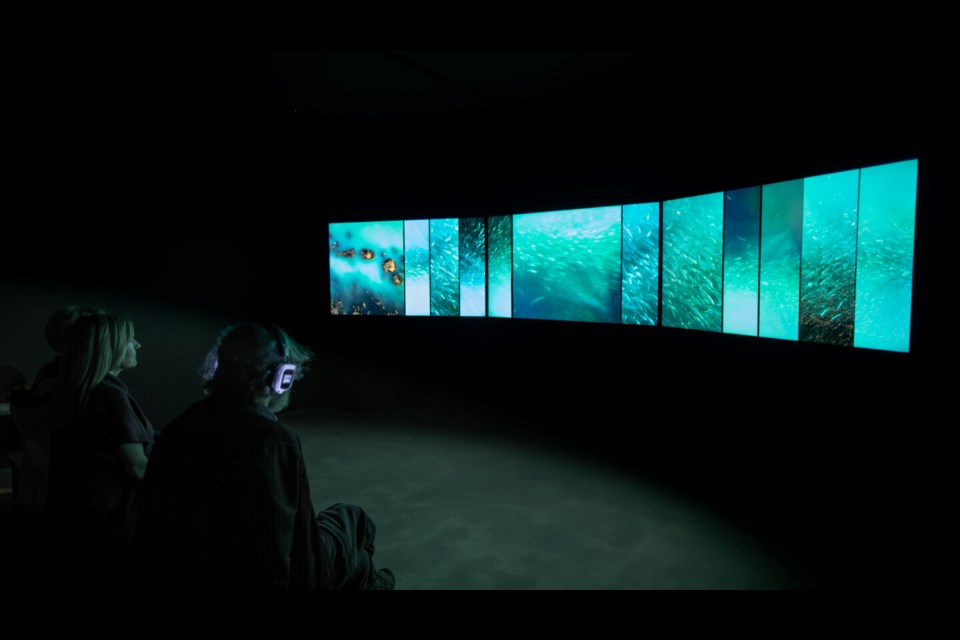A statement from filmmakers Nettie Wild and Scott Smith encapsulates their new collaborative art installation called GO FISH, which they directed, filmed and created as free public art:
“Each year, hundreds of millions of herring return to the Salish Sea, their spawn painting a milky turquoise collar along its shores. For a few chaotic days, the sea is transformed.”
GO FISH had its debut at the Comox Valley Art Gallery (CVAG) in the spring of 2023. The immersive, three-screen kaleidoscope of sound and visuals will grace the walls of qathet Art Centre from September 9 to October 7.
Herring numbers have steadily declined over the past decades, impacting animals that depend on it, including traditional diets. According to an article by Lauren Kaljur from Hakai Magazine, herring almost disappeared from Howe Sound in the mid-1970s, likely due to overfishing and pollution from industry, but in recent years the little fish have been returning to the area.
Communications manager for qathet Art Centre, Haley Hunt-Brondwin, stated that, “herring is an integral resource in the area, and GO FISH is an opportunity to see an intimate look at the impact of the herring spawn on the ecosystem and industry of the Salish Sea, of which we are intricately connected to here in qathet.”
According to the filmmakers, the project was created with the help of and “participation of both environmentalists and the fishing fleet. We want people from all sides of the fishing debate to find themselves in the same room wondering at the full complexity of the spawn, and thinking about our relationship to it.”
Although the two filmmakers bring politics into the work, the experience for the audience is much more, and there are no “talking heads” or interviews involved.
The installation is a video triptych (three screens) with “immersive sound, enveloping viewers in the natural wonder of this annual spectacle.”
The filmmaking takes place underwater, topside and from the air, and plays across the three screens, becoming “a kaleidoscope of images and sound, framing the familiar with an unfamiliar frame.”
The annual herring migration sees hundreds of millions of herring return to the Salish Sea (waters between the mainland, and Vancouver Island) to spawn. This delectable feast attracts fish, sea lions, birds and human fishers.
The herring eggs are a high source of protein and nutrients and a traditional food source for First Nations. The herring fish and roe have been harvested since the 19th century by the fishing industry in the Pacific Ocean.
The artists ask the question: “Can an art installation cut through the reductive roar of social media to better explore the complexity of our relationship to the environment?”
Viewing hours will be Mondays, Tuesdays, Wednesdays and Saturdays, 10 am to 2 pm. For more information, go to qathetart.ca.
Join the Peak's email list for the top headline right in your inbox Monday to Friday: prpeak.com/account/mailinglist.



